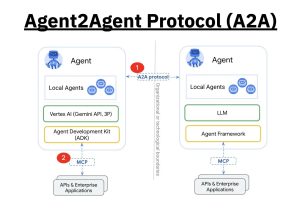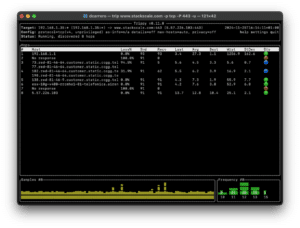As a Linux system administrator, you might need to retrieve a list of all users on your system. Linux stores user information in the /etc/passwd file, which contains details such as usernames, user IDs (UID), group IDs (GID), home directories, and login shells.
This guide will cover multiple methods to list users in Linux, applicable to Ubuntu, Debian, RHEL, CentOS, AlmaLinux, RockyLinux, Fedora, Arch, and other Linux distributions.
1. List All Users Using /etc/passwd File
The /etc/passwd file contains all user accounts on the system. To display its contents, use the following command:
cat /etc/passwdExample Output
root:x:0:0:root:/root:/bin/bash
daemon:x:1:1:daemon:/usr/sbin:/bin/sh
bin:x:2:2:bin:/bin:/bin/sh
sys:x:3:3:sys:/dev:/bin/sh
sync:x:4:65534:sync:/bin:/bin/sync
mysql:x:5:60:games:/usr/mysql:/bin/sh
man:x:6:12:man:/var/cache/man:/bin/shEach line represents a user, with the following fields separated by colons (:):
- Username
- Encrypted password (stored in
/etc/shadow) - User ID (UID)
- Primary Group ID (GID)
- User Information (GECOS field)
- Home Directory
- Login Shell
To display the first or last 5 users:
head -5 /etc/passwd
tail -5 /etc/passwd2. List Only Usernames
If you want to display only the usernames, use the following commands:
Using awk
awk -F':' '{ print $1 }' /etc/passwdUsing cut
cut -d: -f1 /etc/passwdOutput Example
root
daemon
bin
sys
sync
games
mysql
redis
man3. List Users Using getent Command
The getent command retrieves user information from system databases, including /etc/passwd and other sources like LDAP.
getent passwdTo list only usernames:
getent passwd | cut -d: -f1To check if a specific user exists:
getent passwd usernameExample:
getent passwd carrero4. Count the Number of Users
To count the total number of user accounts, use:
getent passwd | wc -lOr:
cat /etc/passwd | wc -l5. Find If a User Exists
To check whether a user exists, use:
getent passwd usernameExample:
getent passwd carrero && echo "User exists" || echo "User does not exist"Another method using grep:
cat /etc/passwd | grep '^carrero:'Using compgen:
compgen -u | grep carrero6. Find System and Regular Users
System users usually have a UID below 1000, while regular users have UIDs starting from 1000.
To check the UID range:
grep "^UID_MIN" /etc/login.defs
grep "^UID_MAX" /etc/login.defsExample output:
UID_MIN 1000
UID_MAX 60000List Only Regular Users
awk -F':' '{ if ($3 >= 1000) print $1 }' /etc/passwdList System Users
awk -F':' '{ if ($3 < 1000) print $1 }' /etc/passwd7. Using compgen to List Users
compgen -uThis will print only usernames.
8. List Currently Logged-In Users
To see the users currently logged into the system, use:
whoor:
wExample output:
carrero pts/1 18t.2xx.2x.1z 11:37 0.00s 0.01s 0.00s gccTo check login details of a specific user:
w carreroTo view system uptime and logged-in users:
uptimeExample output:
17:25:56 up 51 days, 1 user, load average: 0.00, 0.00, 0.009. Using a Script to List Normal Users
The following script lists all regular users who can log in:
#!/bin/bash
# List all normal user accounts (UID >= 1000)
UID_MIN=$(grep "^UID_MIN" /etc/login.defs | awk '{print $2}')
UID_MAX=$(grep "^UID_MAX" /etc/login.defs | awk '{print $2}')
awk -F':' -v min=$UID_MIN -v max=$UID_MAX '{ if ($3 >= min && $3 <= max && $7 != "/sbin/nologin") print $1 }' /etc/passwd10. List Both System and Normal Users
#!/bin/bash
# List all normal users and system users
echo "---- Normal Users ----"
awk -F':' '$3 >= 1000 {print $1}' /etc/passwd
echo ""
echo "---- System Users ----"
awk -F':' '$3 < 1000 {print $1}' /etc/passwdSample Output:
---- Normal Users ----
smith
carrero
colorvivo
---- System Users ----
root
bin
daemon
adm
lp
sync
11. Find Users with Login Disabled
Some accounts are disabled for security reasons, such as nobody, daemon, or apache. To find such users:
awk -F':' '{ if ($7 == "/sbin/nologin") print $1 }' /etc/passwdExample Output
nobody
sshd
apache
mysqlConclusion
You now know multiple ways to list users in Linux, including:
- Reading from
/etc/passwd - Using
getent - Filtering by UID for system vs. regular users
- Counting users
- Checking if a user exists
- Listing currently logged-in users
For more details, refer to the manual pages:
man passwd
man getent
man awk
man cut
help compgenThese methods provide a comprehensive approach for managing and listing users in Linux. Try them out and optimize your system administration workflow! 🚀












